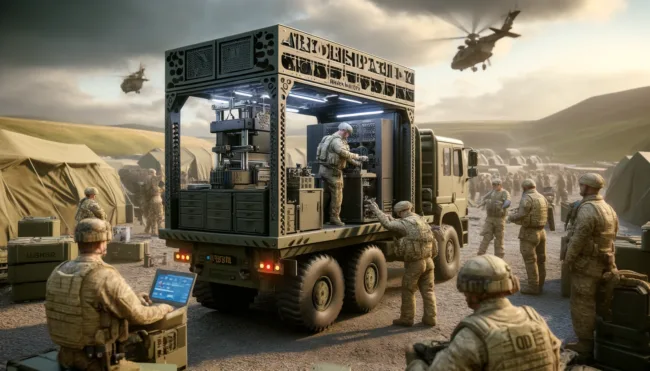British Army deploys world-leading 3D printing technology in NATO exercise
In a significant technological stride, the British Army has begun utilizing a cutting-edge 3D printer in the field, marking a first in global military practices. This deployment occurred during NATO exercise Steadfast Defender, the largest NATO deployment in Europe in a generation. The 9 Theatre Support Battalion, Royal Electrical & Mechanical Engineers, is using this innovative technology to produce spare parts for vehicles and critical modifications to equipment directly on the battlefield.
Enhancing Operational Efficiency with 3D Cold Metal Printing
The mobile 3D printers, capable of handling both metal and plastic, are designed for easy transportation and rapid deployment across various locations. This revolutionary use of 3D cold metal printing technology enables the production of metal parts from the back of a truck in under an hour. This process significantly reduces the need for transporting parts for repairs, thereby saving costs and crucial time during operations.
Defence Secretary Grant Shapps highlighted the strategic importance of this technology: “This world-leading technology is another excellent example of how Britain is at the very forefront of innovation in Defence, providing our exemplary Armed Forces with a faster way to respond flexibly in the field.”

British Army deploys mobile 3D printing technology during NATO exercise Steadfast Defender to revolutionize battlefield logistics.
Technological Details and Future Prospects
The technology employs computer-aided design to create digital blueprints of components, which are then constructed using a high-velocity fine metal powder. This method allows for the production of parts on-demand, which is particularly beneficial for maintaining older vehicle models like the Land Rover by producing hard-to-find spare parts. The Army aims to expand this capability to include a broader range of vehicle components, enhancing logistical support for newer fleets such as the BOXER and AJAX.
Lieutenant Colonel John Anthistle, Commanding Officer of the 9 Theatre Support Battalion, explained the operational benefits: “This equipment gives the Army the flexibility it needs to make spares, components, and modifications to our equipment in the field, at point and time of need. It can reduce logistical issues, save money and critically, speed up getting battle-winning equipment back into the fight.”
International Collaboration and Future Integration
While the Australian military was the first to trial this technology in smaller scale exercises, the British Army has taken a significant step forward by integrating it into large-scale, tactical field operations. This development not only sets a precedent for NATO and allied forces but also enhances the capability to share critical component designs across international lines, fostering greater cooperation and efficiency in defense strategies.
The deployment of mobile 3D printing technology by the British Army represents a transformative approach to military logistics and battlefield readiness. This innovation not only streamlines the repair and maintenance of essential equipment but also positions the UK as a leader in military technology on the global stage.
Discover more from Business-News-Today.com
Subscribe to get the latest posts sent to your email.

